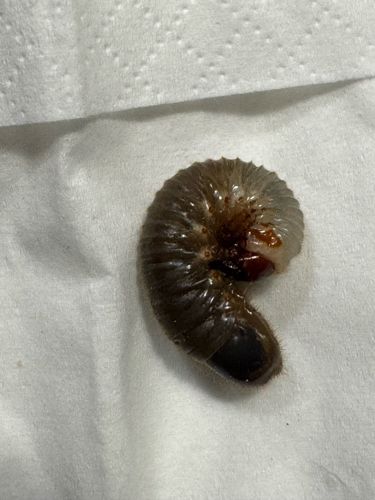Grub (Beetle Larva)
Scientific Name: Various species in Scarabaeidae (e.g., Phyllophaga spp., Popillia japonica, Cyclocephala spp.)
Order & Family: Order: Coleoptera, Family: Scarabaeidae (Scarab Beetles)
Size: Most grubs range from 1/2 inch to 2 inches (1 cm to 5 cm) in length, depending on the species and developmental stage.

Natural Habitat
Grubs typically live underground in soil, compost, decaying wood, or beneath turf. They are often found in gardens, lawns, agricultural fields, and forested areas where there is ample organic matter or plant roots to feed on.
Diet & Feeding
Grubs primarily feed on organic matter in the soil, including decaying plant material, humus, and especially the roots of grasses and other plants. Some species are generalist feeders, while others specialize in certain types of roots.
Behavior Patterns
Grubs are larvae of various beetle species, characterized by their c-shaped, soft, whitish bodies with distinct brownish-orange heads and three pairs of legs. They spend most of their larval stage underground, typically for one to three years, undergoing several instars (molts) as they grow. They are largely inactive, feeding and growing until they pupate into adult beetles. Their movement is slow and often involves burrowing through the soil.
Risks & Benefits
Grubs can pose significant risks to lawns, gardens, and agricultural crops by feeding on plant roots, leading to wilting, browning, and eventual death of plants. Large infestations can cause considerable damage, especially to turfgrass. However, some grubs contribute to the decomposition of organic matter in the soil, which can be beneficial for soil health. The adult beetles can also be pests, depending on the species (e.g., Japanese Beetles).
Identified on: 9/12/2025